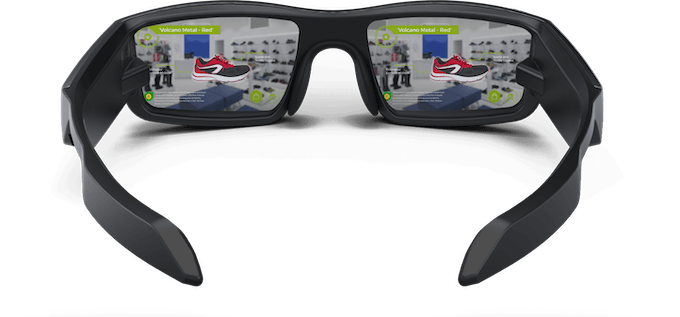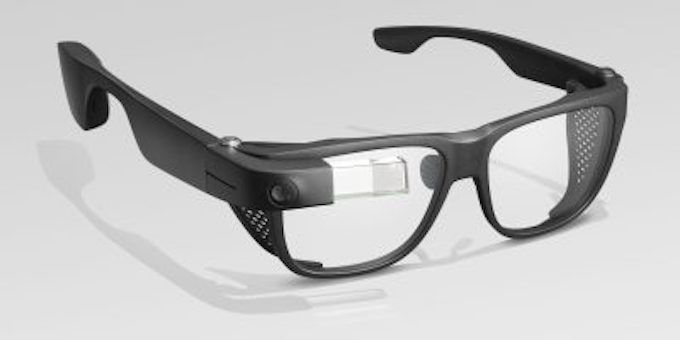Smart glasses are a common trope in science fiction. The wearer puts on a pair of glasses and a heads-up display appears, outlining significant details about whatever they look at. Maybe the glasses display messages or aid them in hacking into a mega-corporation.
Google Glass made headlines for this same reason, although the initial version of the glasses was not the most well received. Thankfully for anyone that grew up watching science fiction, smart glasses are very real—and this article will break down the best smart glasses on the market today.


What Are Smart Glasses?
Smart glasses are more than just lenses. They have small computers that process information and display the results in real-time in such a way that only the wearer can see. This might include information on an incoming call, a GPS route to reach a destination, or even subtitles to assist the hearing-impaired.
You might also see smart glasses referred to as AR glasses, or augmented reality glasses. Mixed reality is another similar term. Due to the computer processing capabilities, these glasses can provide information and improve day-to-day life in a seamlessly integrated way that smartphones can’t match.
Of course, not all smart glasses are about providing the augmented reality experience. Some operate more like a Fitbit and track important health statistics. In this guide, we will look at examples of all the best smart glasses available.
North Focals


The majority of smart glasses are not what anyone would consider attractive; in fact, many of them are downright hideous. Remember the Spectacles by Snapchat? North Focals are anything but ugly. These glasses have an attractive aesthetic and blend right in with conventional styles. More importantly, they support a wide range of prescriptions.
Wearers control the North Focals via the Loop, an inconspicuous ring with a four-direction joystick. The North Focals display everything from text messages to calendar appointments.
If you order an Uber, you’ll be notified by a projection on your lens that lets you know the driver’s name and license plate. You can even use the glasses as a presentation teleprompter. The Focals also have Amazon’s Alexa built right in, granting control of smart devices and access to all the Alexa Skills you can dream of.
Although the Focals are a popular option, North recently announced the Focals 2.0, set to release in 2020. The new version of the smart glasses is set to have an improved display and weigh up to 40% less.
Vuzix Blade


The Vuzix Blade is an undeniably powerful pair of smart glasses, but they aren’t quite as stylish as the North Focals. The Blade have a definite technological look to them, but still manage to fit modern styles well enough that a wearer won’t draw too much attention to themselves. More importantly, the Blade is incredibly powerful. The main appeal? Netflix and other video streaming.
According to the specs, the Vuzix Blade is like watching a 32” TV from 8 feet away. Of course, this takes a toll on its battery life. The Blade will last around two hours when watching a movie on Netflix, but only 35 minutes if using the onboard video to record.
There is an on-board storage space for a micro-SD card. Alexa is also built-in today the Blade and allows users the same level of control as if they were using an Echo device at home.
If you want a pair of Vuzix Blade smart glasses, they will set you back $800 on Amazon—but they are Prime Eligible.
Google Glass Enterprise 2


Google Glass is one of the original versions of smart glasses to ever grace the market, but the Glass Enterprise 2 is a far cry from the 2015 version that led to the coining of the phrase “glassholes.”
The Glass Enterprise 2 is geared towards enterprise solutions, but it is available to anyone. To purchase one of the newest versions of the Google Glass, you’ll have to work with one of Google’s authorized retailers for a custom setup that includes the software you want.
These are powerful, flexible smart glasses, but they may not be the best choice for the average user. If you want to use smart glasses for business purposes, Google can hook you up—but outside of that, the hoops you have to jump through to get your hands on a pair make the task a bit intimidating.
Bose Frames
The Bose Frames are the sunglasses of the future. Sleek and stylish, they look just at home on the beach as they do anywhere else—but their classic design belies a lot of power inside.
The Bose Frames lack some of the bells and whistles of other smart glasses, but they excel at audio performance. The smart glasses have an open-ear audio design that allows wearers to remain aware of anything happening around them while still enjoying their favorite tunes (and without making anyone else listen to them, either!)


The Bose Frames have a built-in microphone for use during calls and for interacting with your phone’s virtual assistant. The frames rely on a Bluetooth link with your mobile device as they are not Wi-Fi enabled. The Bose Frames work with both iOS and Android devices. You can even opt to have the frames tinted a specific color if the traditional black sunglass look doesn’t do it for you.
If you’re looking to get into smart glasses, the Bose Frames are a great entry point. They have less features, but at $200 they are significantly more affordable than the competition.
Do you use smart glasses? What’s your take on the best smart glasses out there? Are these beefed-up lenses the technology of the future or just a fad? Let us know in the comments below!

